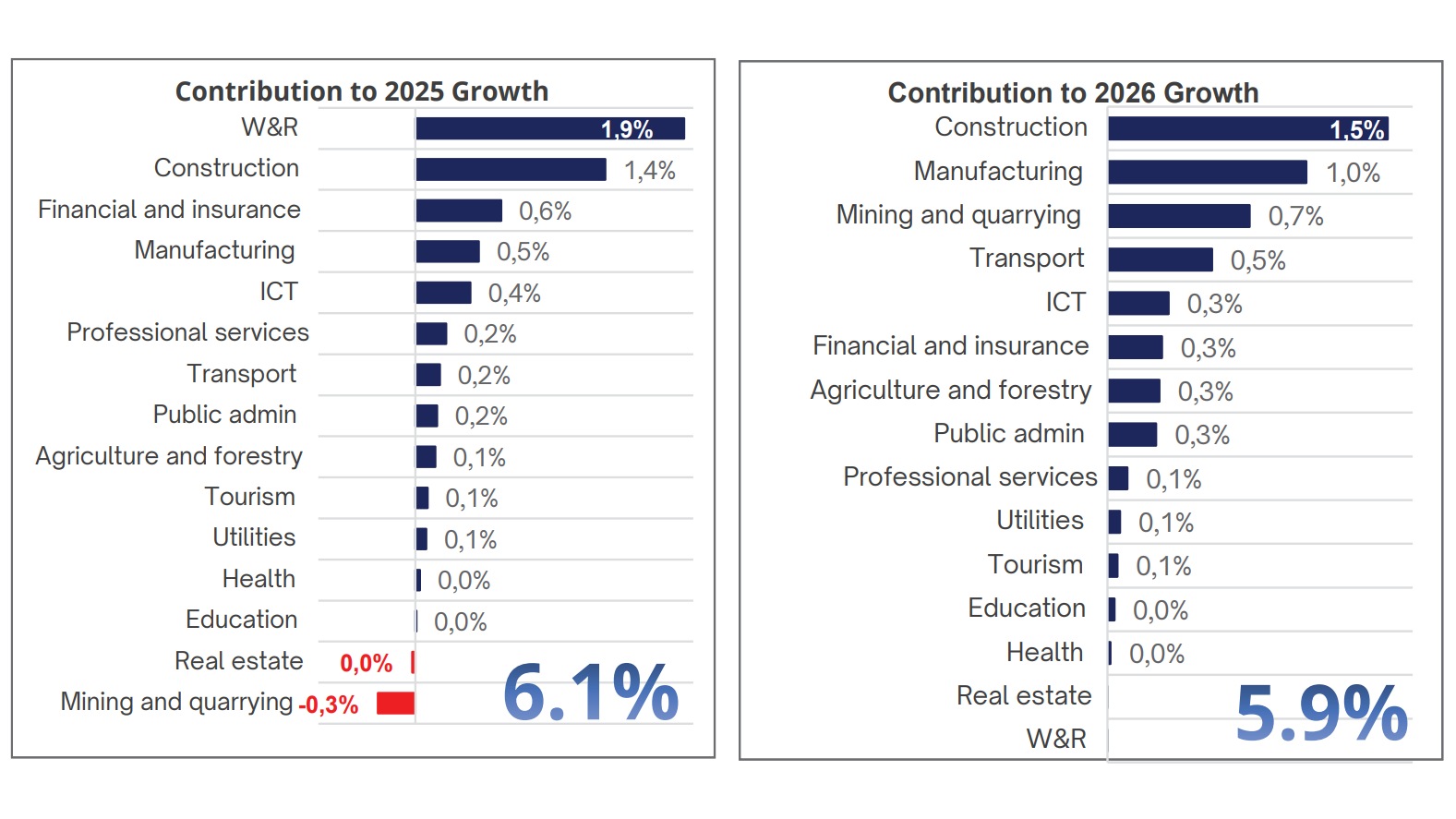
MBABANE - In 2026, the agriculture and forestry subsector is projected to pick up by 5.3 per cent, supported by the growing of crops as well as forestry and logging activities.
Growing of crops is anticipated to increase by 10.7 per cent, driven by additional land under cultivation from the Lower Usuthu Smallholder Irrigation Project (LUSIP II) as well as expansions in sugar cane production in the northern side of the country (along the Mhlume and Simunye areas).
There are also good prospects for other crops such as maize, cotton, bananas and vegetables, among others. Notably, the realisation of envisaged growth in crop production is highly dependent on favourable weather conditions. Negative impacts of the foot-and-mouth disease (FMD) outbreak are expected to continue to weigh on animal production, with the subsector remaining subdued in 2026.
The Ministry of Economic Planning and Development yesterday released the country’s Medium-Term Growth Projections (2025–2030), which reveal a cautiously optimistic outlook. Eswatini’s real gross domestic Product (GDP) growth is expected to strengthen in the short to medium term, primarily driven by infrastructure investments from both the public and private sectors, alongside new regional trade opportunities.
*…
MBABANE - Growth is expected to moderate to an average of 2.9 per cent between 2027 and 2030, with a peak of 4.5 per cent in 2028.
This slowdown is attributed to high base effects from earlier years and the completion of mega projects such as LUSIP II, Mpakeni Dam and major roadworks.
The construction sector is projected to decline sharply, averaging 6.2 per cent, though some large projects like the Strategic Oil Reserve, Ethemba Dam, Central Bank Headquarters and Manzini Mall will sustain activity.
On the upside, energy generation is expected to surge, averaging 22.9 per cent between 2027 and 2030 as new hydro, solar and biomass plants come online.
*…
MBABANE - The ministry projects that real GDP will accelerate to an average of 6.0 per cent between 2025 and 2026, up from a revised 3.0 per cent in 2024.
Growth will be spurred by higher public and private consumption and investment, although export demand may remain constrained by global uncertainty.
In 2025, growth will be mainly driven by a strong recovery in the tertiary sector and resilience in the secondary sector, while in 2026, expansion is expected to be broad-based across all three production sectors.
The primary sector is projected to contract by 1.9 per cent in 2025, following growth of 3.1 per cent in 2024. This decline stems largely from the mining and quarrying subsector, which is expected to shrink by 18.8 per cent due to challenges in South Africa’s ferrochrome industry that have disrupted coal demand. The downturn has already led to retrenchments in Eswatini’s mining sector. However, assuming these challenges are temporary, the ministry anticipates a strong mining rebound in 2026, with growth projected at 67.1 per cent.
*Full article available in our publication.

No more rushing to grab a copy or missing out on important updates. You can subscribe today as we continue to share the Authentic Stories that matter. Call on +268 2404 2211 ext. 1137 or WhatsApp +268 7987 2811 or drop us an email on subscriptions@times.co.sz